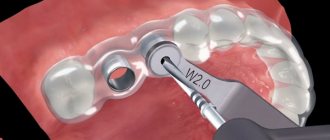If I asked you what is the best way to take sharp photos, something like “Get a good lens” would come to mind. While the quality of your lens definitely plays a huge role in the overall sharpness of your photo, it's still not an absolute guarantee. Let's look at 4 important things that greatly affect the sharpness of your photos.
There are many other factors that come into play when discussing image sharpness or lack thereof. I even said to myself, “If only I had this lens or that lens, I could take better photos.” But have you considered other reasons why your images don't seem to have the sharpness we all strive for?
Let's face it, not all of us can afford the top-of-the-line lenses that we think will provide the sharpest photos possible. But there are many other things that you can do to make sure that you are not standing in the way of creating quality photos even with a kit lens. Here are some simple tips you can use right now to ensure you're getting the most out of the lens you're holding in your hands... or rather, on your camera - and will help you take sharper photos.
Causes
Pneumonia is caused by microbes. Bacteria most likely to cause pneumonia include:
- Pneumococci.
- Mycoplasma.
- Haemophilus influenza.
- Chlamydia.
- Legionella.
People who live or work in crowded places such as schools, shelters, and prisons are more likely to get mycoplasma pneumonia.
Viruses that cause pneumonia:
- Influenza virus.
- Parainfluenza virus.
- Human metapneumovirus.
- Respiratory syncytial virus (RSV).
- Adenovirus.
- Severe acute respiratory syndrome (SARS).
- Herpes virus.
Fungi that cause pneumonia:
- Histoplasma capsulatum (found in the Ohio and Mississippi River valleys);
- Coccidioidomycosis (found in southern California and southwestern desert regions);
- Cryptococcus.
Some bacteria that cause hospital-acquired pneumonia include:
- gram-negative bacteria such as Escherichia coli, Klebsiella pneumoniae, Enterobacter species, Pseudomonas aeruginosa and Acinetobacter species;
- Staphylococcus aureus, including methicillin-resistant S. aureus (MRSA);
- streptococci.
Symptoms
A sign of pneumonia is a cough, dry or with sputum production. The sputum released when coughing is “rusty.” Bloody with pus refers to pneumonia initiated by Friedlander's bacillus or one provoked by streptococcus. If the sputum has an unpleasant, putrid aroma, this indicates that there are inflamed sources of suppuration inside. If there is hemoptysis, this indicates pneumonia caused by fungi. If it is accompanied by intense pain in the side, this indicates a pulmonary infarction.
#1 Yes, the good old tripod
Here she is. The same old practice I always ask you to use - use a tripod. You simply can't escape the fact that the more stable your camera, the sharper your photos will be.
The truth is that there are fewer and fewer excuses for not using a tripod. Lightweight travel tripods are becoming more affordable. These are small, lightweight options that will fit in your camera bag without weighing you down. While it's not always practical, a tripod (even a monopod) is the single best option for stabilizing your camera. But when using a tripod isn't an option, there are still other ways to physically stabilize your camera while shooting. For example, these...
Signs
Pain in the chest area also turns out to be an indicator of pneumonia, and can be both shallow and deep. The first occurs in case of inflammation of the muscles between the ribs; such pain expresses itself especially when taking a deep breath. The second is evidence of damage or stretching of the lung membrane, and also indicates inflammation. The pain becomes stronger with deep breaths or coughing.
If the source of the inflammatory process is in the lower parts of the lungs and the diaphragmatic pleura are still involved in the inflammatory process, then the pain will be localized in the abdominal area, and quite acutely. A feeling of lack of air, i.e. shortness of breath, is an obvious criterion for pneumonia; it expresses itself more strongly during inflammatory processes that form in the case of chronic diseases, for example, inflammation of the bronchopulmonary system or heart failure. Pneumonia is also characterized by such symptoms as chills, high temperature up to 40 ° C, general painful condition, severe weakness, loss of appetite, vomiting, nausea. Sick people or elderly people also experience disorders of consciousness.
How to make everything in the frame sharp: simple about the complex
Beginning photographers are often interested in how to blur the background or, conversely, make everything sharp in a photo. We talked about how to blur the background and gave simple tips last time. Now let's talk about how to increase the depth of field in the frame.
It should be noted that on smartphones, due to the design features of their cameras, the depth of field is always large (but it is almost impossible to blur the background without resorting to processing). This is why many novice photographers, when switching to DSLR or mirrorless cameras, have difficulty increasing the depth of field in their photographs.
For example, when shooting several objects on a table, you want them all to be in sharp focus, just as when shooting a group portrait, you want to see all the faces in focus, which is not always possible for novice photographers. The same problem occurs when shooting a landscape with a foreground - either the foreground is sharp and the background is blurred, or vice versa.
Previously, we prepared a comprehensive series of articles on depth of field and its accurate calculation. However, for a person who has just picked up a camera, such voluminous information may seem complicated. Therefore, here we will talk about how to make everything in the frame sharp, in the simplest possible terms.
The depth of field of the imaged space (DOF) is the range of distances in the image in which objects are perceived as sharp.
It is important to know that ideal sharpness in the frame will only be at the focusing distance. The camera lens, like any optical device, is designed in such a way that focusing is done at a certain distance - from this distance, in the direction towards us and away from us, the zone of sharpness, or the depth of field of the imaged space (DOF), diverges. The amount of depth of field depends on three quantities.
- Lens focal length . This value characterizes its viewing angle. The wider the viewing angle, the shorter the focal length, but the greater the depth of field. Changing the focal length, or zoom, is changed by the zoom ring on the lens - the user sees a narrowing or widening of the viewing angle. Do not confuse the focal length of the lens with the focusing distance!
The selected focal length is always indicated on the corresponding lens scale; it is measured in millimeters. The lens is now set to a focal length of 18mm.
Short focal length means greater depth of field.
Long focal length means shallower depth of field.
- Focus distance is the distance from the subject to the camera sensor. The shorter this distance, the shallower the depth of field. Therefore, the closer you get to the subject, the more difficult it is to keep within the depth of field.
Advanced lenses often have a scale indicating the focusing distance in meters and feet. The depth of field is measured from this distance.
And in the most modern lenses (for example, Nikon NIKKOR Z 24–70mm f/2.8 S) such a scale is electronic. In addition to the distance itself, it also shows the boundaries of the depth of field.
There is a long distance between the photographer and the subject. Even when using a rather large focal length, thanks to the long shooting distance, everything in the photo was included in the depth of field.
NIKON Z 7 / 70.0-300.0 mm f/4.5-5.6 SETTINGS: ISO 100, F8, 20 s, 300.0 mm eq.
- Aperture value . Aperture is a mechanism that regulates the diameter of the hole in the lens through which light enters the camera sensor. The wider this hole, the shallower the depth of field. The smaller the aperture, the greater the depth of field, but less light passes through the lens, which can be a problem when shooting in low light.
Open aperture means shallower depth of field.
Result at f/2.8
Closed aperture—large depth of field.
Result at f/16
Based on the above, we will give practical advice on increasing the depth of field in photographs.
The first recommendations do not require the user to have any special skills or knowledge of shooting parameters.
- Shoot at the minimum zoom of your lens . Or in other words, with a wider viewing angle, at a short focal length. But be aware that a wide viewing angle has a side effect: to shoot close-ups you will have to get closer to the subject, which, in addition to a shallower depth of field, will also give pronounced perspective distortions. If you shoot people at short focal lengths at close range, the proportions of faces and bodies will be distorted. To prevent this from happening, just use the following advice.
NIKON D850 / 18.0-35.0 mm f/3.5-4.5 SETTINGS: ISO 100, F7.1, 1/40 s, 18.0 mm equiv.
- Move away from your subject . Increase the shooting distance, and the depth of field will increase along with it. Think about the composition of the frame: in the case of portrait photography, you can take not a close-up shot, but a half-length or even full-length shot - at a long shooting distance, everything in the picture will be sharp.
NIKON D850 / 70.0-300.0 mm f/4.5-5.6 SETTINGS: ISO 31, F8, 4 s, 145.0 mm equiv.
- Place important objects closer together . Think about how to recompose the frame so that all important objects are located at approximately the same distance. Ask people to stand closer to each other in a group portrait, or rearrange objects in a still life so that they are the same distance from the camera.
In addition, there is one more trick: try to shoot objects laid out on the table strictly from top to bottom - then they will all be at approximately the same distance from the camera, and you will get a picture in the “flatlay” style that is popular today.
- Think about the subject of the photo and prioritize correctly . The creative power of photography often lies in the fact that only the most important things remain sharp in the picture, while unimportant things are blurred. A novice photographer often, without understanding the composition of the frame, tries to immediately make everything sharp, since in his understanding only absolute sharpness is a criterion for the quality of a picture, which is not always the case. If the photographer knows exactly what is most important in his photo, then problems with depth of field will be solved by themselves, and the frame will turn out to be more concise, interesting and understandable to the viewer.
The next group of recommendations assumes the photographer’s desire to configure basic shooting parameters independently. Don't be afraid of technology: such a skill is not difficult to master, you just need to pay a little more attention. But these skills will allow you not to depend on the quirks of automatic modes, always get predictable results and significantly improve the level of your photographs.
- Shoot with a closed aperture . This is the most universal solution. After all, as we remember, the deeper the aperture is closed, the greater the depth of field. The aperture can be adjusted in mode A (Aperture Priority) or mode M (Manual).
NIKON D850 / 18-35 mm f/3.5-4.5 SETTINGS: ISO 64, F13, 1 s, 24.0 mm equiv.
Aperture is usually designated by the letter f (or F) followed by a number: f/2.8, f/4, f/5.6, and so on. The larger the number after f, the more closed the aperture and the greater the depth of field. Try closing your aperture to f/8 first and check if there is enough depth of field at this value. If not, close it down a little more, to f/11–f/14. If even at such values there is not enough depth of field, you should resort to other methods. After all, if the aperture is too closed, less light will pass through the lens, which means the quality of the pictures may decrease. It is better to shoot in daylight, use a tripod and flash.
Open aperture - f/3.5
Closed aperture - f/11.
The aperture value on the information screen of the Nikon D3500 camera. It’s convenient that not only the value changes here, but also the aperture icon. The more we close it on the lens, the more it closes on the pictogram.
- Learn to focus accurately! It often happens that a beginner’s problem is not so much a lack of depth of field, but rather a shift or inaccurate focusing: the automatic focus is not where it should be. The focusing process is nothing more than accurately aiming the lens at the shooting distance. And we know that the depth of field in our photos depends on it. Master your camera's autofocus system, learn how to choose the right focus points - it's not difficult. In modern cameras with a touch screen (for example Nikon Z 6, Nikon Z 7, Nikon D5600, Nikon D7500, Nikon D850), you can generally select the desired place to focus by tapping on the screen, like on a smartphone.
Nikon Z 7 full-frame mirrorless camera with Nikon NIKKOR Z 24–70mm f/4 S lens
Please note that all of the methods below work not only individually, but also in combination with each other.
Once you learn how to adjust your aperture and choose your focus points, don't stop! There are many special techniques available to you that will help increase the depth of field. To begin with, it makes sense to learn how to accurately calculate the depth of field, study focusing techniques in landscape, portrait and subject photography - each has its own specifics!
NIKON D850 / 18-35 mm f/3.5-4.5 SETTINGS: ISO 100, F5.6, 30 s, 18.0 mm equiv.
Among the advanced methods of working with depth of field, we highlight focusing on the hyperfocal distance, at which the lens gives maximum sharpness for a given aperture and focal length. Hyperfocal focusing works especially well with wide-angle lenses and is often used in landscape, architectural, and interior photography.
NIKON D850 / 70.0-300.0 mm f/4.5-5.6 SETTINGS: ISO 31, F8, 4 s, 70.0 mm eq.
Another technique is focus stacking. We can shoot several frames with different focus, and then put them together into a frame with a huge depth of field. For example, they remove jewelry and insects. Detailed lessons have already been prepared on Prophotos.ru about all these techniques.
Diagnostics
Fluorographic examination is the main method for diagnosing pneumonia. It is carried out by a radiologist or x-ray laboratory assistant with further interpretation. Algorithm for fluorography:
- Undress to the waist, remove jewelry from your neck.
- The study is carried out in a vertical position.
- An image is taken in a direct projection (the patient presses his chest against the sensor).
- Further in the lateral projection (the patient places his hand behind his head and presses the side of his chest against the device).
- The images are taken with quiet breathing and at the height of inspiration, with breath holding.
After taking photographs, they need to be developed. Some offices use a digital fluorography format. When the images are developed, the doctor begins to decipher them.
Pathologies
On a chest x-ray of a healthy person you cannot see:
- Airways. At the level of the VI vertebra, the larynx passes into the trachea, which continues to the IV or V thoracic vertebrae. Here it is divided into the main bronchi: right and left.
- Trachea and bronchi. In a healthy person, they are not visible on an x-ray because their walls are too thin to reflect radiation. They are visible only when the tracheobronchial tree is displaced to the affected side (with atelectasis - collapse of the lung), pleural effusion, pneumothorax (presence of air in the pleural cavity).
- The lymph nodes. They can be detected during inflammation in the main bronchi and during cancer metastasis in the form of enlarged round spots with smooth contours.
- Articulations of ribs and sternum. Calcification of the first rib occurs at 30-36 years of age. Ossification of the cartilaginous part of the remaining ribs appears after 50 years with various pathologies of the endocrine system.
White spots
White spots (focal opacities) in the lungs may be a sign of:
- pneumonia (indistinct, blurry contours, varying intensity);
- tumors;
- atelectasis (triangular in shape; the end is directed towards the root, coincides with the size of the segment);
- tuberculosis (various).
Photo 1. An example of how an X-ray of a healthy person’s lungs should not look like: an image with a tumor.
Cavity
The cavity indicates:
- tumor decomposition;
- lung abscess;
- focus of tuberculosis.
Small lesions
Small scattered foci can be detected when:
- silicosis;
- tuberculosis;
- sarcoidosis.
A high position of the diaphragm cone is possible with postthromboembolic syndrome.
With emphysema, the diaphragm becomes flattened.
Deformation of the cardiac shadow indicates diseases of the cardiovascular system or pathology of the mediastinal organs.
Indications and contraindications
Fluorography should be done when symptoms of the disease are present. If a person is diagnosed with a lobar or focal disease, secondary radiographs are prescribed to observe changes in “bad” shadows during treatment.
A specific indication is a suspicion of an acute inflammatory process in the lung tissue or another serious illness. To take a picture, it is necessary to consider the harm and benefit of the diagnosis. Only if the benefit from x-ray exposure exceeds the harm, radiography is performed.
There are no contraindications for the examination. The only limitation is pregnancy. But if pneumonia is suspected in pregnant women, a fluoroscopy of the lungs is performed. At the same time, the efforts of doctors are aimed at maximally protecting the expectant mother’s body from radiation.
The dangers of X-rays
X-rays passing through the skin can cause damage to skin cells. Therefore, doctors strive to take as few X-rays as possible: just enough to detect the disease, but no more. Medical personnel working in X-ray rooms wear lead aprons, as noted, or perform X-rays using a remote control while in an adjacent room, the walls of which are lined with lead plates.
Interesting: What metals, besides iron, are attracted by a magnet?
Focal pneumonia
To diagnose, you need to look at a photo of what focal pneumonia looks like on an X-ray. You also need to be familiar with the decoding:
- the presence of an active infiltrate of a non-homogeneous structure;
- the “suspicious” shadow has a vague outline;
- with inflammation of the pleura, linear heaviness can be seen, fluid in the costophrenic sinus on the side of the pathology;
- against the background of resolution of the process, the site of infiltration becomes heterogeneous due to zones of destruction and healing of the lungs.
What should be missing from a picture of a healthy person?
An X-ray of the lungs of a healthy person demonstrates the absence of unnecessary darkening, lightening, or additional shadows in the image.
For an experienced doctor performing x-rays or fluorography, there are no random colors or smeared paints. A professional radiologist can easily “read” the meaning of each dark and light fragment, and is able to explain what may be causing their appearance. Darkenings indicating the presence of pathological processes in the respiratory organs can be:
- partial;
- limited;
- widespread.
Partial and limited darkening is found in certain areas of the lung tissue. They are represented by peculiar, clearly defined dark foci. Common blackouts are usually classified as the most dangerous anomalies. These pathological processes cover the entire area of the lungs.
Identification of unusual dark areas on the image often indicates the presence of lumps. The latter can occur against the background of oncological processes, pneumonia, and pleurisy. Abnormal shadows that look like dots appear in patients who have recently had bronchitis. Ring-shaped indicate the presence of air-filled cavities in the lungs (this syndrome often accompanies extrapulmonary processes - deformation of the ribs, increased gas formation in the intestines, pleural cavity).
In addition to darkening, the image of a healthy person should be free of abnormal phenomena in the form of adhesions, layers, fibrosis, sclerosis, heaviness, and radiance.
Lobar pneumonia
What does pneumonia look like on an x-ray if it is croupous:
- subtotal, total darkening from one or two edges;
- displacement of the mediastinum towards the limiting lesion;
- change in physical damage to the domes of the diaphragm;
- blockage of the costophrenic sinuses with fluid;
- complete deformation of the pulmonary pattern;
- heaviness of the roots of the lungs.
It is possible to identify the features of lobar inflammation on an x-ray. However, in pathology, the medical standard for diagnosis is radiography in two projections (direct and lateral). This kind of list of procedures is performed to assess the number of affected parts of the lungs and study the condition of the mediastinum.
X-ray with stress and results
Weight-bearing examination of the feet is performed for various reasons. Using this method, data is obtained about the features of the structure and anatomy of the joints.
As a rule, it is used for suspected flat feet in children, although this type of pathology also develops in adulthood.
Indications for performing an x-ray examination are the following reasons:
- anomalies of the osteoarticular system;
- diagnosis of forms of flat feet;
- various foot deformities.
Photos are taken in the same projections as in a regular study. Projections of two or more are assigned by a traumatologist based on existing symptoms.
X-ray of the feet with a load, carried out in a timely manner, allows the traumatologist to assess the condition of the injured area.
To get a high-quality image, the patient simply stands with the affected leg on the X-ray cassette.
In this case, the second leg is supported by weight. To complete the picture, an image in two projections is necessary.
Another photo is taken from the side. In this way, an image of both feet is obtained. This simple technique makes it possible to assess the degree of development of the pathology and prescribe treatment procedures.
When the patient completes the prescribed course of treatment, the study must be repeated.
Repeat x-rays are performed to evaluate the results of treatment. To compare a sore foot with a healthy one, the foot must be fixed in the same position as during the first session.
Video:
The method of examining the condition of the feet under load makes it possible to monitor the health status of children and adolescents. Flat feet can be easily corrected with the help of special procedures and orthopedic shoes.
It is very important to detect pathology in a timely manner and carry out health measures. There is a chance that the foot deformity will continue, but to a much lesser extent.
X-rays for foot injuries are performed as a diagnostic procedure. Ligaments, bones, joints and soft tissues can be damaged.
X-ray radiation itself is not a medical procedure. With its help, a general picture of the resulting pathology is formed.
The attending physician, receiving comprehensive data, makes certain decisions on further treatment.
Obviously, it is necessary to carry out an X-ray examination of the foot within the framework of current norms and regulations, otherwise the data obtained will not be very accurate.
Decoding spots
To decipher the photo, you need to know what a photo of the lungs looks like during pneumonia. Darkenings in the image are not only isolated, but also numerous (disseminated). Interpretation of fluoroscopy for inflammatory changes in lung tissue demonstrates that X-ray syndrome looks typical for the disease. It has a medical name - limited or widespread darkening.
If there is disease in the lungs, then in the picture:
- infiltrative source in any part of the organ;
- heaviness of roots;
- outline deformation;
- veiling of the costophrenic sinus.
When grading, you need to understand that the photo comes out flat. Contains a summary display of absolutely all anatomical structures. The picture looks negative because X-ray film is a photographic negative. Against the background of infiltrative sources, clearings are observed, which represent air zones of the lung tissue.
What is this method
The modern CT method consists of obtaining the same picture of layers, but now not from a physically cut object, but from its X-ray image. The authors of the algorithm for this manipulation were I. Radon, A. Cormack and G. Hounsfield.
The Austrian mathematician Radon developed the layer-by-layer imaging technique in 1912, and in 1963 its analogue was proposed by the American physicist Cormack. The authorship of the assembly of the first tomograph belongs to the English engineer Hounsfield and dates back to 1971.
It is clear that the newest method has made it possible to obtain much thinner layers of the organ or body being studied. Thanks to the latest computer processing technologies, it is possible to make 600 layers or even more, and also carry out three-dimensional reconstruction based on them.
Why is this necessary?
CT is the main tool for diagnosing Sars-CoV-2 due to its high accuracy and ease of procedure. The accuracy of the study exceeds 97%, the procedure itself takes no more than 30 minutes.
Fact! Covid-19 can also be detected using conventional x-rays and ultrasound.
The disease must be treated without waiting for the results of PCR tests (nasopharyngeal swab analysis). Doctors have been talking about this since the very beginning of the pandemic, and now this thesis has been approved in the methodological recommendations of the Russian Ministry of Health. A CT scan is used to detect pneumonia.
Blood and nasal secretion tests are needed to determine the coronavirus itself, the causative agent of the infection. However, they may show a negative result due to imperfections in the method or errors in implementation.
If, during the collection of biomaterial from the nasopharynx, the virus has already descended into the lower respiratory tract and entered the lungs, then it cannot be detected. In addition, the mere fact of the presence of “corona” in the body does not affect treatment tactics in any way.
What does a CT scan show?
A CT scan for coronavirus shows inflammatory foci in the lungs that look like “frosted glass.” These areas seem to be covered with a white, cloudy coating, which indicates damage to the organ.
After entering the body, the coronavirus causes changes in the alveoli of the lungs, which are involved in respiratory acts and gas exchange processes. The alveolar vesicles fill with fluid, which leads to disruption of gas exchange and its cessation. Lung tissue actually loses its natural ability to pump in oxygen and remove carbon dioxide.
Various test systems, laboratory test results and medical examination cannot be compared in accuracy with computed tomography
It is not unique and is observed in pneumonia of different origins - viral, bacterial and mycotic (fungal). It may also be present in allergic manifestations, in particular exogenous alveolitis.
Fluorography in children
Parents are often interested in what pneumonia looks like in a child’s picture. Fluorography of a child looks different, unlike adults. Due to the reactivity of the immune system, every smallest accumulation in children can quickly cause croupous inflammation. It is important to carry out timely diagnosis of the disease and detect focal inflammation.
What are the signs of inflammation in a child:
- Focal opacities in the lower lobe of the lungs.
- Infiltrates are no higher than 1-2 millimeters in diameter.
- High density of spots is detected with advanced inflammation.
- The compaction and growth of the mediastinal lymph nodes is difficult to observe in the photo.
- After the disappearance of painful shadows, the deformation of the pattern persists for another 7 days.
- If the process is poor, small-focal pneumonia turns into pseudolobar inflammation.
- The high saturation of the lesion covers the structure of the root and pulmonary pattern.
The child often exhibits swelling of the lung tissue, which complicates the diagnostic criteria. The inadequacy of the x-ray and medical picture of the disease can also be explained by the small size of the lung tissue and the huge number of elements of the pulmonary pattern per unit area.
How are x-rays done?
Like weakly thrown balls, photons of visible light bounce off the skin. And high-energy X-rays pass through it unhindered. To X-rays, skin cells are just large, watery, completely transparent bags. Bone tissue is much denser than skin. Therefore, X-rays cannot penetrate bone: most cathode ray photons are absorbed by bone structures. As a result, we can photograph bones through the skin using X-rays, in the same way that a fish is photographed through a layer of water in an aquarium with a regular camera using visible light. The skin is transparent to x-rays.
Interesting: Why don't ships sink? Description, photo and video
Fluorography principle









